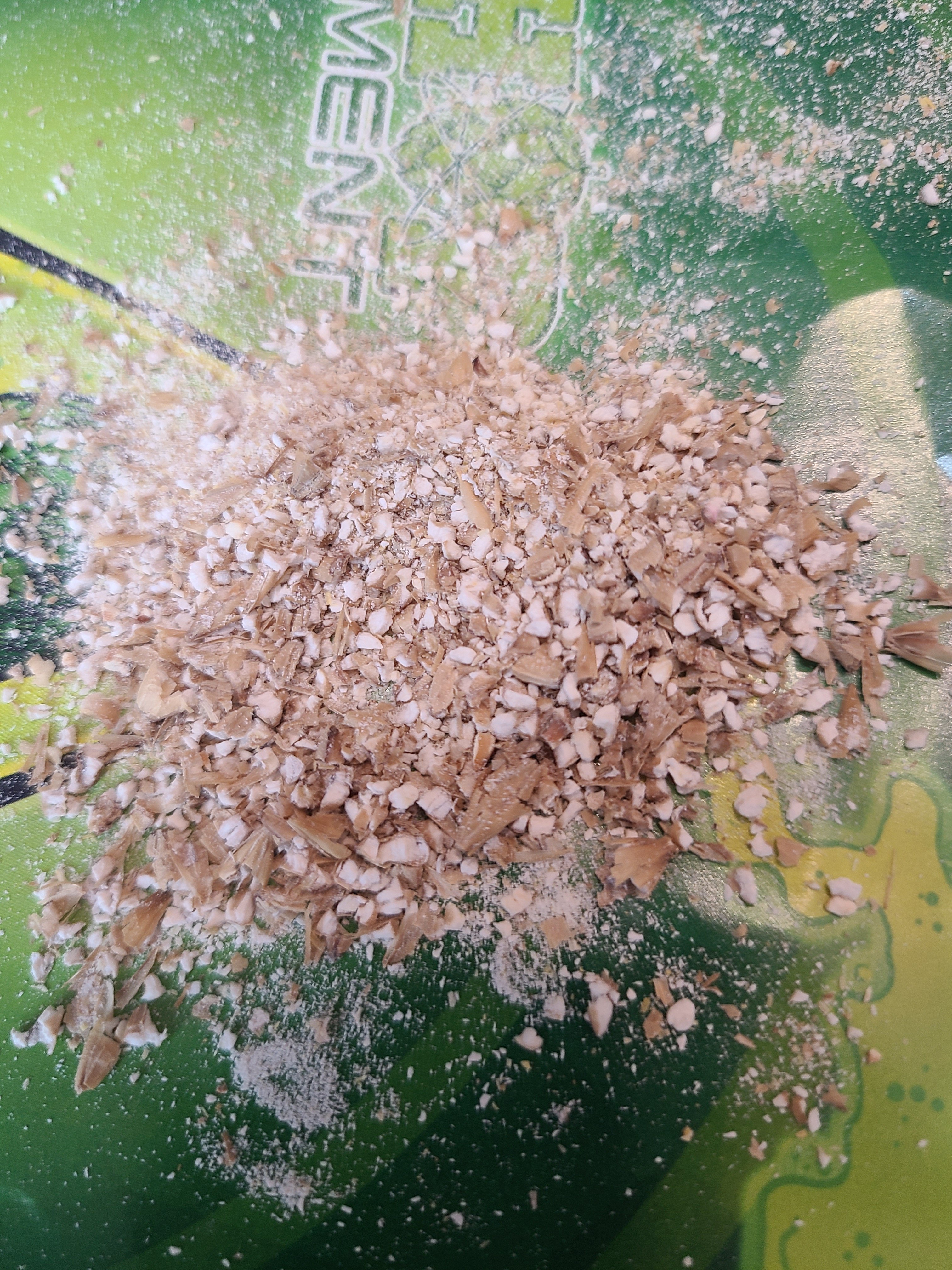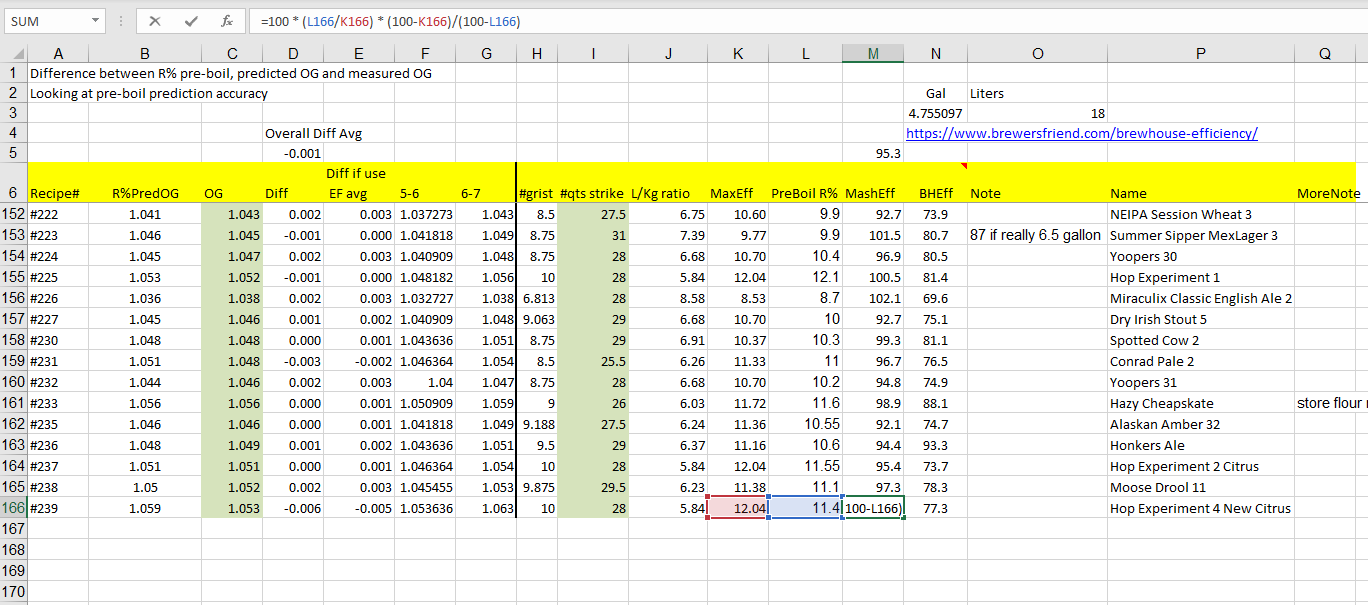redrocker652002
Well-Known Member
Not sure if this goes here but wondering something. Is this crush too fine?




I am sure I can search it, but I am being lazy. Is there some sort of test or way to determine when full conversion, or at least a percentage of it, has been completed? Or is it just looking at our OG and seeing where your brew software puts it at a certain percentage? Thanks in advance.The fineness of the crush will determine how long it will take for full conversion and somewhat control the efficiency of the mash. With a very fine milling the conversion happens way quicker than most of you would believe. As the milling becomes more coarse, it takes longer for the starches to gelatinize and extracting the sugars from the grain particles becomes less efficient.
If you recirculate with BIAB you must use a coarser milling or your bag will gets its pores clogged and the wort won't flow through. Then since you have to use coarser milling your mash period becomes longer and your mash temperature falls. If it falls far enough, you will want to add heat and this becomes another problem areas as it is really easy to heat part of the mash to the point that you destroy the enzymes that are needed for conversion.
I mill my grains to near flour consistency and add them to water that is at the proper strike temperature. Then knowing how fast conversion really, I don't try to recirculate or add heat because neither is necessary. With no sparge, the efficiency I get is approximately 80%. With sparging I can bring that to near 95% which I think is beyond necessary.
There are two ways to determine full or nearly full conversion. One is to test for the presence of residual starches using iodine. Take a small amount from the mash that includes lots of grain. Drop a drop of iodine on it. If there is starch there iodine will turn blue.I am sure I can search it, but I am being lazy. Is there some sort of test or way to determine when full conversion, or at least a percentage of it, has been completed? Or is it just looking at our OG and seeing where your brew software puts it at a certain percentage? Thanks in advance.
And @redrocker652002 , if you really wanna go deep down a rabbit hole, check out this site.There are two ways to determine full or nearly full conversion. One is to test for the presence of residual starches using iodine. Take a small amount from the mash that includes lots of grain. Drop a drop of iodine on it. If there is starch there iodine will turn blue.
The second method is to calculate the possible sugars and then using a refractometer or hydrometer, determine the percentage of the possible sugars have been extracted.

+1. I use a feeler gauge set at .022" which is where I set the gap the first time I ever used the mill. I've never changed it, but I do make it part of my routine to check it every time prior to milling. I typically get between 75%-80% mash efficiency without sparging. The only times I've ever had an annoyingly slow drain is when I brew my American Wheat, which is ~60% white wheat.It is possible to crush too fine, even with BIAB. I set the roller gap way low once, made a powdery-like crush, and lautering was a mess. Hoisted out the bag and it was like a giant balloon full of water. Glad I had it hanging from a ratchet pulley! Had to squeeze a lot.
Go to the auto parts store and pick up a feeler gauge. That way you can actually measure the roller gaps. Many BIABers set the gap for around .025", give or take a bit. Experiment and see what works best for you.
Being a gear head, I think I have about 3 or 4 of those laying around. Will have to dig one up. Haven't used them in years as plugs come pregapped now. LOLIt is possible to crush too fine, even with BIAB. I set the roller gap way low once, made a powdery-like crush, and lautering was a mess. Hoisted out the bag and it was like a giant balloon full of water. Glad I had it hanging from a ratchet pulley! Had to squeeze a lot.
Go to the auto parts store and pick up a feeler gauge. That way you can actually measure the roller gaps. Many BIABers set the gap for around .025", give or take a bit. Experiment and see what works best for you.
It depends on the bag. If the pores of the bag are too fine, it can clog. Especially with protein richer grains like wheat and such.Once again it's clear that different people's M definitely MV. As usually happens in threads on this topic, you've already gotten "no such thing as too fine a crush for BIAB" and "crushed too fine and plugged up my bag" responses. I don't have a mill, but I have taken grain crushed at my LHBS and put it through my food processor to turn it into almost flour for BIAB with a dunk sparge and gotten good results. You probably just need to experiment and figure out what works best for you.
It depends on the bag. If the pores of the bag are too fine, it can clog. Especially with protein richer grains like wheat and such.

I’m a BIAG guy. I use a 400 micron bag and do a recirculation. It’s works fine for me. 200 micron bags are ok if you use a coarser grind.It depends on the bag. If the pores of the bag are too fine, it can clog. Especially with protein richer grains like wheat and such.
Agreed. It's not anywhere near a fine crush.OP's crush looks pretty coarse to me.

I do BIAB with a Wilser bag.
I crush grain using a 2 roller Hullwrecker set to .028" (I could probably go a couple thou tighter) and I get very good results.
View attachment 832149
Enter your email address to join: